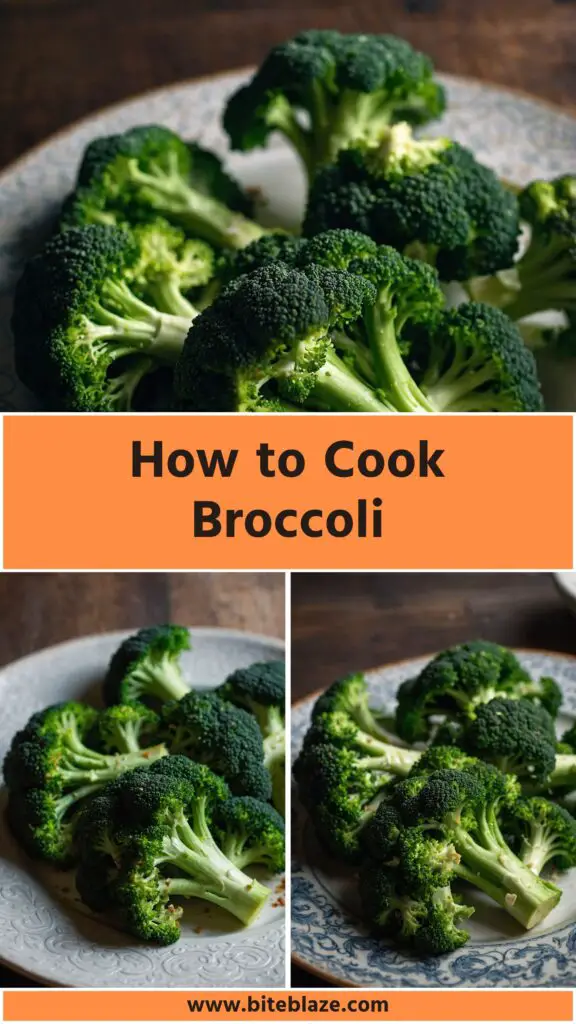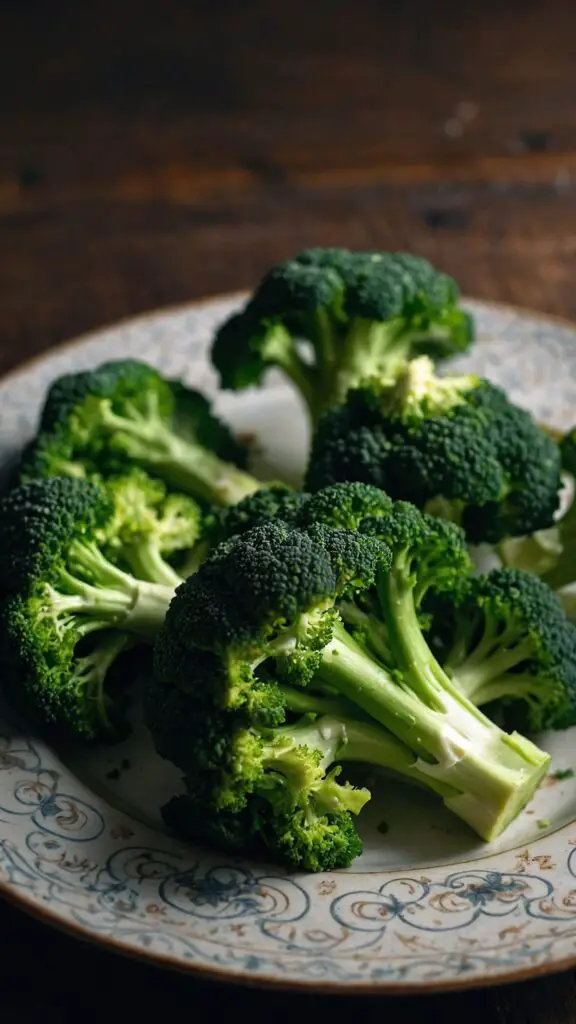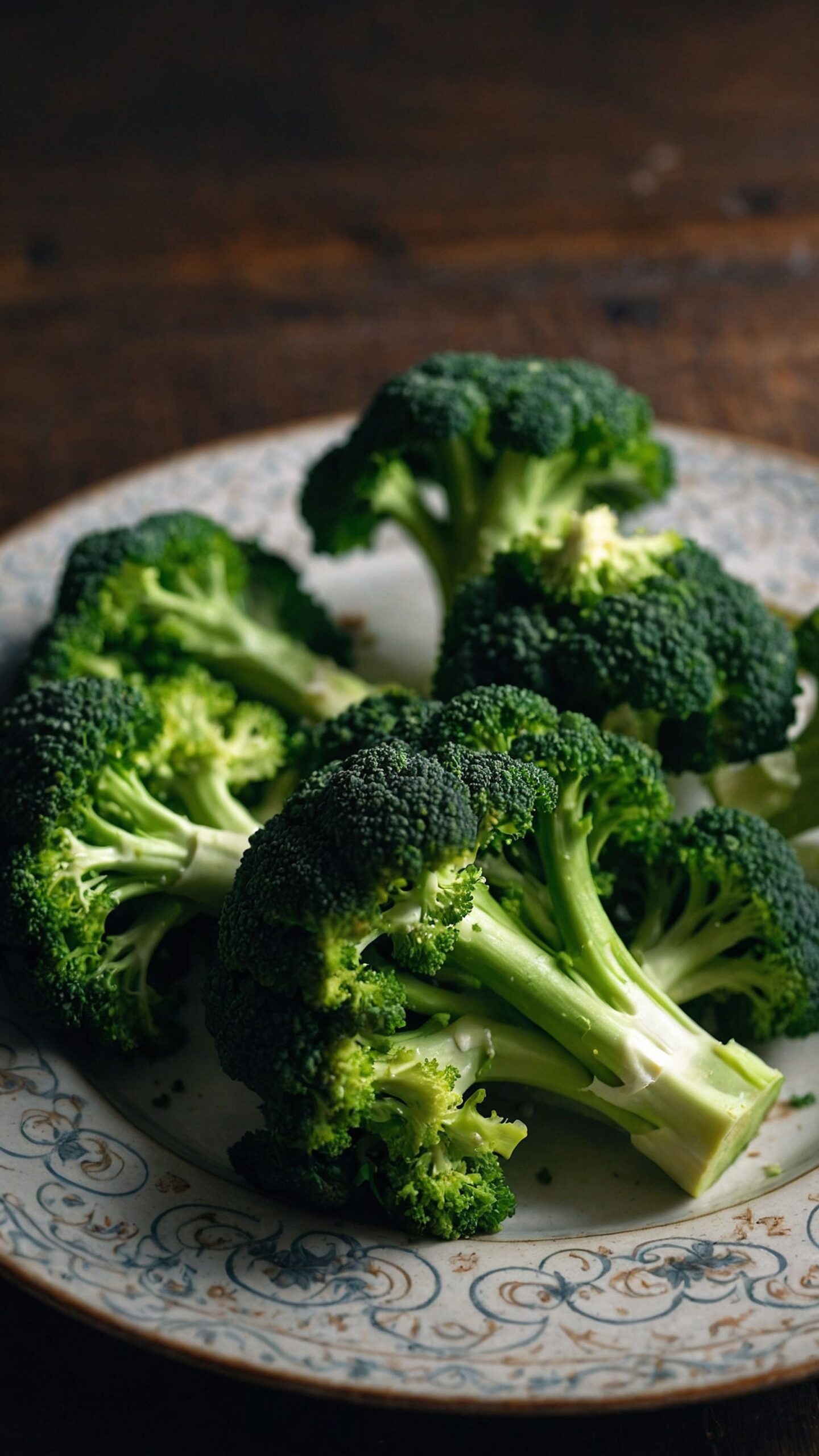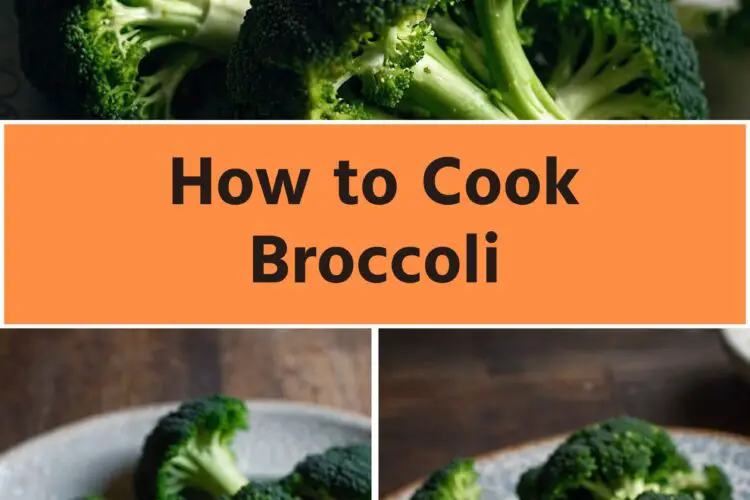Growing up, broccoli was often the underdog at the dinner table. It sat next to the star players—think cheeseburgers and pasta—but over the years, I discovered its surprising charm. One meal that pairs beautifully with broccoli is Italian Pasta Salad, brimming with flavor and vibrant colors.
It’s a dish that brings together fusilli noodles, crunchy bell peppers, and, of course, that zesty Italian dressing. Imagine a table filled with laughter, where every forkful of pasta dances with the subtle crunch of broccoli. Trust me, it’s a match made in culinary heaven!
Cooking broccoli might seem like a simple task, but there are nuances that can take this humble vegetable from good to spectacular. In this comprehensive guide, I will share everything I’ve learned about cooking broccoli, infused with anecdotes and personal tips that can help you elevate your kitchen skills. Let’s dive in!

What is Broccoli?
Broccoli is a nutrient-rich vegetable belonging to the cruciferous family, which also includes cauliflower and kale. Its dark green florets are packed with vitamins C and K, fiber, and a host of other antioxidants. It can be enjoyed steamed, roasted, stir-fried, or raw, making it versatile for any meal.
You will also like the following Side Dishes recipes!
- Herb Garlic Potato Stacks Recipe
- Copycat Rosemary Roasted Root Vegetables
- Crispy Air Fryer Sweet Potato Tots
The Ingredients
To prepare scrumptious broccoli, you don’t need an arsenal of ingredients. Here’s a simple list:
- 1 bunch fresh broccoli, trimmed into florets
- 1–2 tablespoons olive oil or melted butter (for a vegan option, use olive oil)
- 1 teaspoon toasted sesame seeds
- Freshly cracked black pepper, to taste
- 1–2 tablespoons finely grated Parmesan cheese (optional)
- Zest or juice of ½ lemon, or 1 tablespoon balsamic vinegar or seasoned rice vinegar
- 1 tablespoon toasted sliced almonds

How to Cook Broccoli?
Cooking broccoli is not just a matter of boiling water and throwing it in. The key is in the details and methods. Whether you choose to steam, sauté, or roast, you’ll find ways to create an enjoyable dish rather than an afterthought.
In the next section, we’ll lay out a step-by-step guide for preparing broccoli that’s bursting with flavor and nutrients.
Step-by-Step Directions
Step 1: Choose and Prep Your Broccoli
Select a fresh bunch of broccoli. Look for dark green florets that are tightly packed. Any yellowing signifies age. After washing, trim off the tough ends and cut the broccoli into even-sized florets. This helps them cook uniformly.
Step 2: Decide on Cooking Method
You have several options here. Each method brings out a different flavor profile and texture.
- Steaming: Fill a pot with water, insert a steamer basket, and bring it to a simmer. Place your florets in the basket, cover, and steam for about 5-7 minutes.
- Sautéing: In a hot skillet, add olive oil. Toss in the broccoli florets and cook for 4-6 minutes, stirring frequently for even cooking.
- Roasting: Preheat your oven to 425°F. Toss your florets with olive oil, salt, and pepper. Spread them out on a baking sheet and roast for 20-25 minutes until crispy at the edges.
Step 3: Seasoning
After cooking, it’s time to play with flavors. If you went the sauté or roast route, sprinkle the broccoli with freshly cracked pepper, toasted sesame seeds, and a generous grating of Parmesan cheese, if you like. Add a splash of lemon juice or balsamic vinegar for brightness.
Step 4: Serve and Enjoy
Transfer your beautifully cooked broccoli to a serving dish. Garnish with toasted almonds for crunch. Take a moment to appreciate what you’ve created, then dig in!
Notes: Tips for Cooking Broccoli
- Don’t Overcook: Keep an eye on your broccoli. Overcooked broccoli becomes mushy and loses its vibrant color.
- Add Flavor: Infuse olive oil with garlic or chili flakes before cooking for an extra kick.
- Experiment with Cooking Times: Different sizes will alter the cooking time. Smaller florets will cook faster.
- Pair Wisely: Broccoli pairs excellently with lemon zest, garlic, and even a sprinkle of feta cheese.
- Try New Techniques: Consider blanching as a pre-cooking technique for a bright color and crisp texture.
Storage Tips
Stored properly, broccoli can last in your fridge for up to a week. Keep it in a perforated bag to allow for ventilation. If you’ve cooked broccoli and have leftovers, place it in an airtight container. It can last for about 3-5 days in the fridge. Reheat gently to maintain texture.
Nutrition Information
Broccoli is a nutrient powerhouse. A standard serving (about one cup cooked) provides:
- Calories: 55
- Protein: 4.5 grams
- Carbohydrates: 11 grams
- Fiber: 5 grams
- Vitamin C: 135% of the Daily Value
- Vitamin K: 116% of the Daily Value
- Folate: 14% of the Daily Value
- Iron: 4% of the Daily Value
Packed with vitamins and fiber, broccoli supports digestion and is linked to a reduced risk of chronic diseases.

Serving Suggestions
- As a Side Dish: Pair your broccoli with grilled chicken or steak, where the vegetable’s fresh flavor complements the richness of the meat.
- In Salad: Toss steamed broccoli florets in a bright lemon vinaigrette along with cherry tomatoes and cucumbers.
- Mixed in Pasta: Add sautéed broccoli to your favorite pasta dishes, like an Alfredo or pesto, for a nutrient boost.
- On a Pizza: Roast broccoli with garlic and sprinkle it over pizza for a colorful topping.
- In Stir-fry: Combine with other vegetables like bell peppers and snap peas in an Asian-inspired stir-fry.
What Other Substitutes Can I Use for Broccoli?
It’s great to know alternatives for broccoli in a recipe. Here are a few options:
- Cauliflower: A fantastic substitute, it has similar cooking properties and a mild flavor.
- Green Beans: If you want a different texture, green beans provide crunch and require similar cooking times.
- Asparagus: This spring vegetable offers a distinct flavor and can be steamed or roasted easily, akin to broccoli.
- Brussels Sprouts: For something unique, halved Brussels sprouts roast beautifully and impart a nutty flavor.
- Zucchini: Sliced or diced zucchini can work well, especially in sautéed or stir-fried dishes for a lighter flavor.

How to Cook Broccoli
Ingredients
Equipment
Method
- Select a fresh bunch of broccoli. Look for dark green florets that are tightly packed. Any yellowing signifies age. After washing, trim off the tough ends and cut the broccoli into even-sized florets. This helps them cook uniformly.
- You have several options here. Each method brings out a different flavor profile and texture.
- Steaming: Fill a pot with water, insert a steamer basket, and bring it to a simmer. Place your florets in the basket, cover, and steam for about 5-7 minutes.
- Sautéing: In a hot skillet, add olive oil. Toss in the broccoli florets and cook for 4-6 minutes, stirring frequently for even cooking.
- Roasting: Preheat your oven to 425°F. Toss your florets with olive oil, salt, and pepper. Spread them out on a baking sheet and roast for 20-25 minutes until crispy at the edges.
- After cooking, it’s time to play with flavors. If you went the sauté or roast route, sprinkle the broccoli with freshly cracked pepper, toasted sesame seeds, and a generous grating of Parmesan cheese, if you like. Add a splash of lemon juice or balsamic vinegar for brightness.
- Transfer your beautifully cooked broccoli to a serving dish. Garnish with toasted almonds for crunch. Take a moment to appreciate what you’ve created, then dig in!
Nutrition
Notes
- Don’t Overcook: Keep an eye on your broccoli. Overcooked broccoli becomes mushy and loses its vibrant color.
- Add Flavor: Infuse olive oil with garlic or chili flakes before cooking for an extra kick.
- Experiment with Cooking Times: Different sizes will alter the cooking time. Smaller florets will cook faster.
- Pair Wisely: Broccoli pairs excellently with lemon zest, garlic, and even a sprinkle of feta cheese.
- Try New Techniques: Consider blanching as a pre-cooking technique for a bright color and crisp texture.
Tried this recipe?
Let us know how it was!Frequently Asked Questions (FAQs)
1. Can I eat broccoli raw?
Absolutely! Raw broccoli is crunchy and nutritious. Consider it in salads or as a dip with hummus.
2. How can I tell if broccoli is fresh?
Fresh broccoli should have a lively green color without yellowing. The florets should be tightly packed.
3. Is it better to cook broccoli or eat it raw?
Both options are nutritious. Cooking can enhance certain antioxidants but may reduce vitamin C. Balance both methods for varied benefits.
4. What’s the best way to reheat cooked broccoli?
A gentle steam or microwave for a short time is ideal. Avoid high heat to prevent losing texture and flavor.
5. Is there a best time to buy broccoli?
Broccoli is typically best in the fall and spring months. Look for seasonal produce in your area for peak freshness.
Conclusion: A Green Gem Worth Cooking
Broccoli may be a simple vegetable, but its versatility can transform your meals. Remember the lessons learned: choose fresh florets, experiment with cooking methods, and don’t shy away from unique seasonings.
Cooking can be an enjoyable experience, blending flavors and colors while making healthy choices. I guarantee—once you unlock the potential of broccoli, it might just become a staple on your dinner table, complementing dishes you love. So, grab a bunch and give it a try! Your taste buds—and your body—will thank you.


